Easy & Spicy Korean Radish Salad – Musaengchae Recipe.

Easy.
Spicy.
Addictive.
I’m not exaggerating when I say that I’ve been eating this spicy Korean radish salad banchan non-stop for months. It is SO easy to make and because I make it in bulk (like a real Korean ajummah!), it lasts for days, even when I have some at dinner every single night.
This Korean radish salad is made of Korean radishes and is a staple of Korean side dishes (or banchan). The crunchy texture and balance of sweet and tart makes this the perfect side dish! If you like (or love) Korean food, you’re going to want to make this Korean spicy radish salad!
So, let’s get into it!
- What Is Korean Radish?
- What Is Spicy Korean Radish Salad or Musaengchae?
- Key Ingredients & Notes on Substitutions for Spicy Korean Radish Salad Recipe.
- Optional Ingredients for Spicy Korean Radish Salad.
- Step-By-Step Instructions for Spicy Korean Radish Salad.
- Frequently Asked Questions.
- More Korean Side Dishes.
- Recipe Card.
- Questions & Comments
Disclaimer: Some of the links in this post may be affiliate links for products I use and love. If you make a purchase after clicking one of those links, I may earn a small affiliate commission, perhaps enough to buy some extra gochujang or gochugaru 🙂
What Is Korean Radish?

The Korean word for radish is “mu” (무), one of those root vegetables that many of you hated when you were growing up (I hated radishes, too–mostly). But, the Korean radish is noticeably different from the Western radish in many ways. It is a white radish that is longer and wider than its Western counterparts. The tops are pale green, while the bottoms sprout into a skinny tail. They are sometimes called “Joseon radish” and impart a sweet flavor, but also a “green” flavor.
They have firm crisp flesh and often look like potatoes when they are cut up and put in a stew (I used to mistake them for potatoes all the time growing up!). The best way to tell that you have radishes (instead of potatoes) is that radishes are slightly translucent, even when cooked.
The Korean radish plays an incredibly important role in Korean cuisine. It flavors broths for soups, stews, and even noodles (e.g., naengmyeon or cold Korean buckwheat noodles); it’s fermented to create kimchi like kkakdugi (Korean pickled radish cubes) and chonggak kimchi (Korean radish kimchi or “ponytail” kimchi); and, like here, it can be “quick pickled” to create more of a salad. You’ll always find at least one side dish, called banchan, featuring radishes at Korean restaurants or at a Korean meal. The flavor of the Korean radish is one of the first things you’ll notice when you eat lots of Korean dishes–it’s one of those things that immediately signals to your brain, “Oh! Korean food!”
Although they are often used interchangeably, there is a difference between Korean radishes and daikon radishes. In terms of appearance, the Japanese daikon radish tends to be skinnier and longer and does not have a pale green gradient at the top. As to flavor and texture, I’ve found that daikon radishes are far less sweet and are not as crunchy.
What is the nutritional breakdown of a Korean radish? It is relatively low in caloric density and is virtually fat-free, but it still manages to pack fiber, potassium, calcium, and Vitamin C. In sum, the Korean radish is a great vegetable for those trying to maintain a balanced and longevity focused diet.
What Is Spicy Korean Radish Salad or Musaengchae?

The phrase “Korean radish salad” is a rough translation, at best, of “musaengchae” (무생채). Why do I say “rough”? As I’ve said a billion times, “salad” doesn’t really have much history with Korean food. When I think of salad, I do not think of pickled or fermented vegetables and this banchan is definitely a pickled dish. Then why call it a “salad”? For most Korean side dishes, when referring to a very quickly pickled dish (as opposed to a long-pickling or any real fermentation process), we use the word salad (like when making napa cabbage “salad” or geotjurri).
Moreover, unlike most salads that I know of, this Korean radish salad, like most banchan, is meant to be enjoyed over a period of several days. Because, as you’ll see, it’s a quick side dish, you’ll almost always see it included among the arsenal of banchan inside a Korean refrigerator or among the prepared dishes at a Korean supermarket.
What does it taste like? It’s crunchy, sweet, tart, and spicy. Think pickled carrots, but crunchier and spicier. The acid really makes it a complement to heavier main courses (like Korean fried chicken), as the flavor really cuts through the richness.
Is it vegan? Sadly, not really. As is the case with so many Korean side dishes, the Korean radish salad or musaengchae is usually seasoned with fish sauce (myulchi aekjeot). This version utilizes either my vegan fish sauce or omits it altogether. Both ways taste GREAT!
Key Ingredients & Notes on Substitutions for Spicy Korean Radish Salad Recipe.
The following are some recommended substitutions to certain ingredients for this Korean radish salad recipe:
Korean Radish.

As the name suggests, this Korean radish salad recipe starts with–you guessed it!–Korean radish! And no–you will not find this at most Western style grocery stores or even at a general Asian grocery store. You will need to go to a Korean grocery store. During the late fall, you can often find “Jeju Korean radish” which, as you probably figured out, refers to radishes harvested from the island of Jeju. If you can find these, GET THEM!!! They make the BEST radish for this recipe (and for any Korean radish-centric recipe)! They are extra sweet and crunchy!
Otherwise, how do you pick out a good quality radish? My mom told me that the best way is to look at the green gradient at the top. The greener they are and the longer that gradient extends, the better the radish.
What about substitutions? I would not try this Korean radish salad recipe using red radishes. The texture and flavor are very different. Moreover, the radishes need to be julienned and I dunno about you, but julienning a small, round radish is not an easy chore. If you can’t get your hands on a proper Korean radish, your best bet is to use a daikon radish. While they aren’t exactly the same, they’re similar enough in flavor and texture that you’ll achieve a very similar result. You can usually find daikon radish at most Western style grocery stores and certainly at an Asian market.
Coarse Sea Salt.
The next important ingredient to making this Korean radish salad recipe is sea salt. If you can get Korean sea salt, that is your best option. However, if you don’t have easy access to coarse Korean sea salt, a coarse Kosher sea salt is your next best option. Coarse Kosher sea salt has a very similar salinity to Korean salt. You can also order Korean sea salt online!
White Sugar.
As I mentioned, this spicy Korean radish salad recipe is about balance. Sugar is used to neutralize some of the saltiness and tartness. We don’t use a lot of it, and much of the sugar we do use will get rinsed off.
In terms of substitutions, I would not try to substitute with brown sugar or a liquid sweetener here (we’ll be adding one to the sauce later). Instead, I would substitute with Stevia (or similar powdered sweetener), making adjustments to account for Stevia’s extra sweetness (1 gram of Stevia = 2 tablespoons of sugar). Another option would be to omit the sugar altogether, since you will be adding a liquid sweetener to the sauce.
Coarse Gochugaru.

Coarse gochugaru or Korean red pepper flakes provide both heat and a sweet smokiness to your Korean radish salad. You can also modify the spice level with the kind and amount of gochugaru you add to your Korean radish salad. Unfortunately, if you can’t get your hands on gochugaru, there really isn’t a good substitution for Korean red pepper powder. You can try using smoked paprika, but, generally speaking, paprika is typically too finely ground for a recipe like this. Luckily, these days, you can find gochugaru at most grocery stores (not just Asian ones) and online!
Garlic.
This is Korean food. Of course there’s going to be garlic. And yes, it’s raw garlic. I know some people have a problem with adding raw garlic to their dishes, but consider that it will be pickled along with the radish…? If you still have a problem with raw garlic, I would simply skip it. Yes, it will remove some of the flavor from this Korean radish salad, but it won’t, like, kill this side dish or anything…!
Green Onions.
There’s a reason why all the green onions from your local grocery store or farmers market disappear when a middle-aged Korean mom is around–green onions are a MASSIVE player in Korean food! And this Korean radish salad is no exception to that rule! The green onions add a lovely bit of umami to this Korean radish salad and should not be omitted. If you really can’t STAND green onion, try using only the green parts or reducing the quantity. Otherwise, you can also substitute garlic chives (especially if you ditch the raw garlic) or regular chives (the latter is a last resort type of thing).
Rice Vinegar.
Many pickled Korean side dishes are pickled with rice vinegar, including this one. If you don’t have rice vinegar (sometimes referred to as rice wine vinegar), you can substitute with any fruit forward vinegar. I sometimes use apple vinegar (which isn’t the same as apple cider vinegar, though you can use that too) or persimmon vinegar. I would avoid using a straight up white vinegar, as I find that to be a little too stringent for this Korean radish salad recipe.
Liquid Sweetener.
I like using plum syrup for this Korean radish salad recipe, because it’s already got that great sweet but also tart flavor profile; but you can substitute your favorite unrefined sweetener for this recipe, including brown rice syrup, coconut sugar, date sugar, or maple syrup.
Cracked Black Pepper.
Although this Korean radish salad recipe already calls for gochugaru, I like adding a couple turns of cracked black pepper. It provides another dimension to the smoky heat of the chili flakes and a wonderful peppery taste.

Optional Ingredients for Spicy Korean Radish Salad.
The following are a few optional ingredients that can enhance the flavor of your Korean radish salad:
Vegan Fish Sauce.
Many traditional recipes for Korean radish salad or musaengchae include a little fish sauce. I’ve made it both ways and have found both delicious. I know not everyone has access to a vegan fish sauce, so I wanted to reassure you that this is a great recipe, with or without the fish sauce.
Sesame Oil and/or Toasted Sesame Seeds.
In addition to fish sauce, a lot of musaengchae recipes also call for a little bit of sesame oil and toasted sesame seeds. I prefer to keep those out. Don’t get me wrong–I love sesame oil and toasted sesame seeds!! But, I like to keep my pickled recipes oil free, if possible. But, if you want to add a dash of richness to your Korean radish salad, add a drizzle of sesame oil and a tablespoon of toasted sesame seeds!
Step-By-Step Instructions for Spicy Korean Radish Salad.
Step 1.
Thoroughly scrub your radish–make it clean enough to eat with the peel (you’ll see why in a second). Cut your radish in half and place it flat side down, running your vegetable peeler from the top down. SAVE THOSE PEELS in the freezer. Why? They make the BEST broth!! You can simmer them in filtered water, along with onions, garlic, leeks, mushrooms, and potato to make the best Korean vegetable broth of your life! Then, julienne your radish into thin matchsticks (I use the Ajummah method: slice them into thin discs first and then run my knife through them, per the photos below).
Step 2.
Place your julienned radish into a large bowl, together with sea salt and sugar. Stir the contents to make sure your radish is evenly coated with both. Set aside for 25 minutes. Stir the contents once more, so that the radish pieces on the bottom are now on the top. Set aside for an additional 20 minutes. There should be some liquid at the bottom of your bowl. Drain this pickling liquid into a small bowl. DO NOT DISCARD!
Step 3.
Rinse the julienned radish in cold water at least twice in order to make sure they aren’t too salty. Then, place them in a large bowl and add the remaining ingredients: green onions, garlic, gochugaru, plum syrup, rice vinegar, black pepper (and, if using, vegan fish sauce, sesame oil, and sesame seeds). Add back the reserved pickling liquid. Mix until the radish is evenly coated. This Korean radish salad can be enjoyed immediately or stored in an airtight container in the refrigerator for several days. Over time, you will find additional liquid coming from the radish, but that just means more saucy goodness!
Frequently Asked Questions.
What is the difference between Korean radish and daikon radish?
In terms of appearance, the Japanese daikon radish tends to be skinnier and longer and does not have a pale green gradient at the top. As to flavor and texture, I’ve found that daikon radishes are far less sweet and are not as crunchy.
Is spicy Korean radish salad vegan?
In general, no. Spicy Korean radish salad or musaengchae usually contains fish sauce, making it inappropriate for a vegan diet. However, you can use vegan fish sauce or omit fish sauce altogether to make it suitable for a vegan diet.
What does a Korean radish taste like?
Korean radish is a white radish that is longer and wider than its Western counterparts. The tops are pale green, while the bottoms sprout into a skinny tail. They are sometimes called “Joseon radish” and impart a sweet, but also noticeably “green” flavor. They are quite crunchy in texture.
More Korean Side Dishes.
Recipe Card.

Spicy Korean Radish Salad.
Ingredients
- 400 g Korean radish (equal to about 1/2 large Korean radish)
- 2 tbsp course sea salt
- 2 tbsp organic white sugar
- 1/4 cup gochugaru (can use less if too spicy)
- 1/4 cup chopped green onion
- 2 tbsp minced garlic
- 3 tbsp plum syrup
- 2 tbsp rice vinegar
- 1 tsp cracked black pepper
Optional Ingredients.
- 1 tbsp vegan fish sauce
- 1 tbsp sesame oil
- 1 tbsp toasted sesame seeds
Instructions
- Thoroughly scrub your radishes–make them clean enough to eat with the peel (you'll see why in a second). Peel your Korean radish using a vegetable peeler. I like to cut my radish in half and place it flat side down, running my vegetable peeler from the top down (you can save the peels to make broth). Then, julienne your radish into thin matchsticks.
- Place your julienned radish into a large bowl, together with sea salt and sugar. Stir the contents to make sure your radish is evenly coated with both. Set aside for 25 minutes. Stir the contents once more, so that the radish pieces on the bottom are now on the top. Set aside for an additional 20 minutes. There should be some liquid at the bottom of your bowl. Drain this pickling liquid into a small bowl. DO NOT DISCARD!
- Rinse the julienned radish in cold water at least twice in order to make sure they aren't too salty. Then, place them in a large bowl and add the remaining ingredients: green onions, garlic, gochugaru, plum syrup, rice vinegar, black pepper (and, if using, vegan fish sauce, sesame oil, and sesame seeds). Also add back the pickling liquid. Mix until the radish is evenly coated. This Korean radish salad can be enjoyed immediately or stored in an airtight container in the refrigerator for several days. Over time, you will find additional liquid coming from the radish.

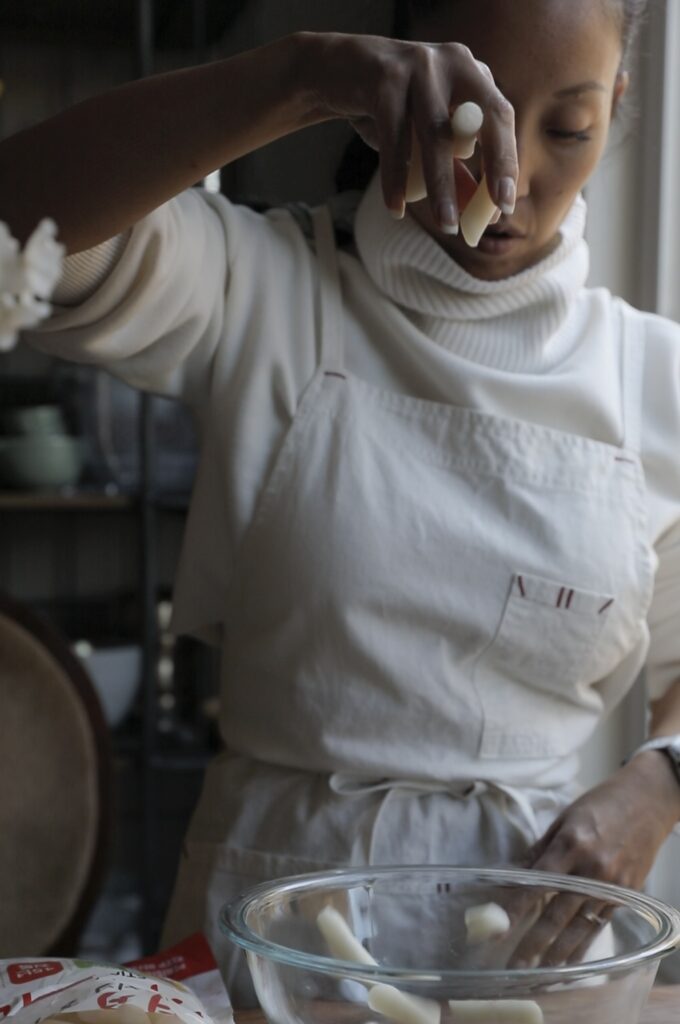













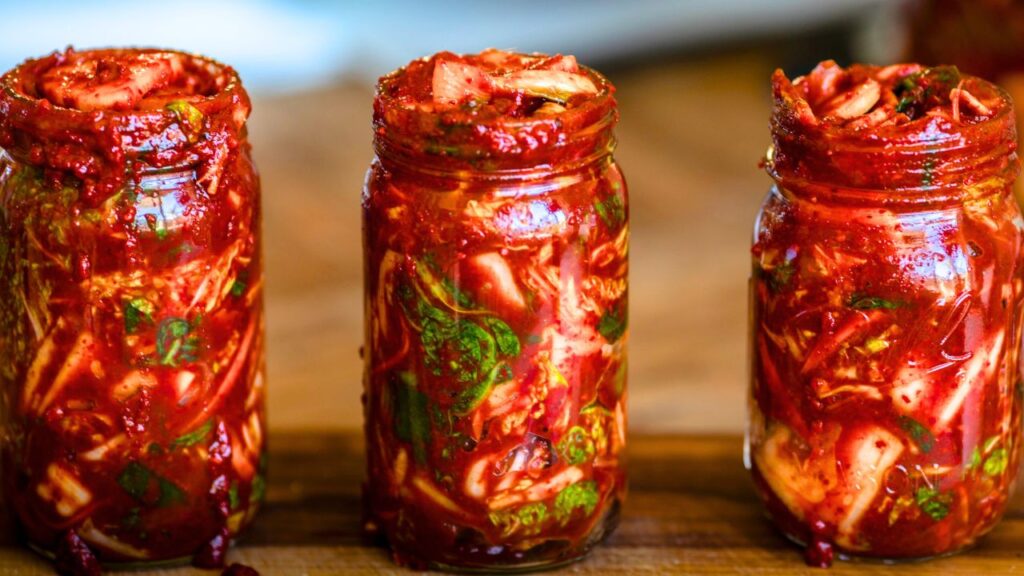
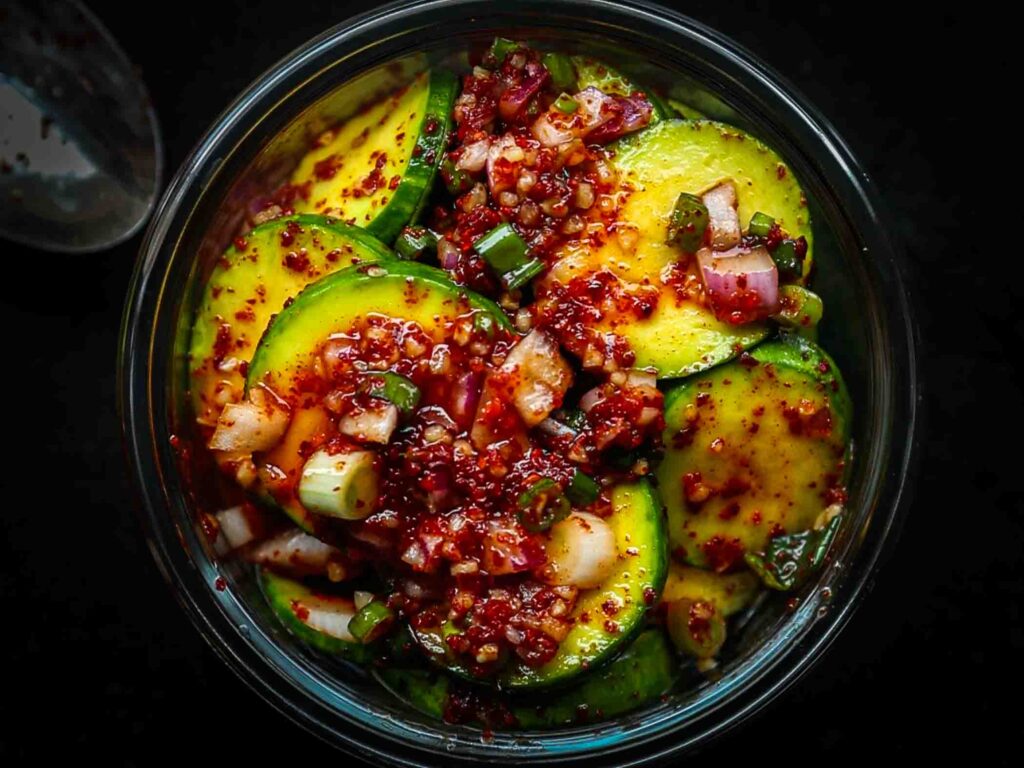
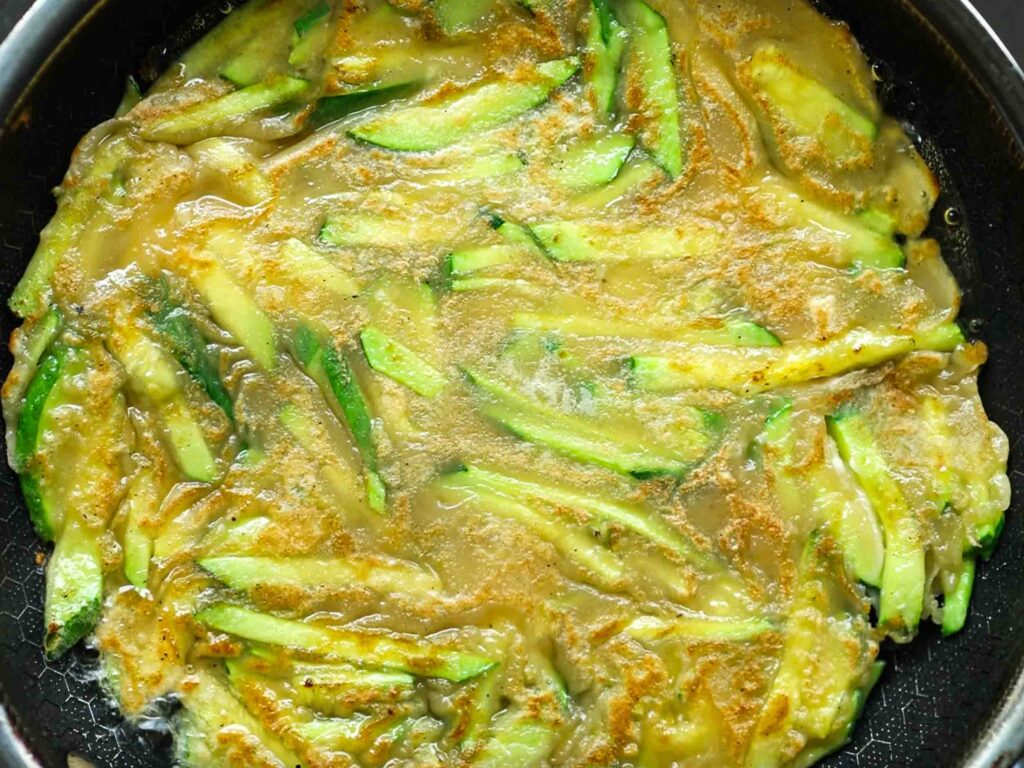


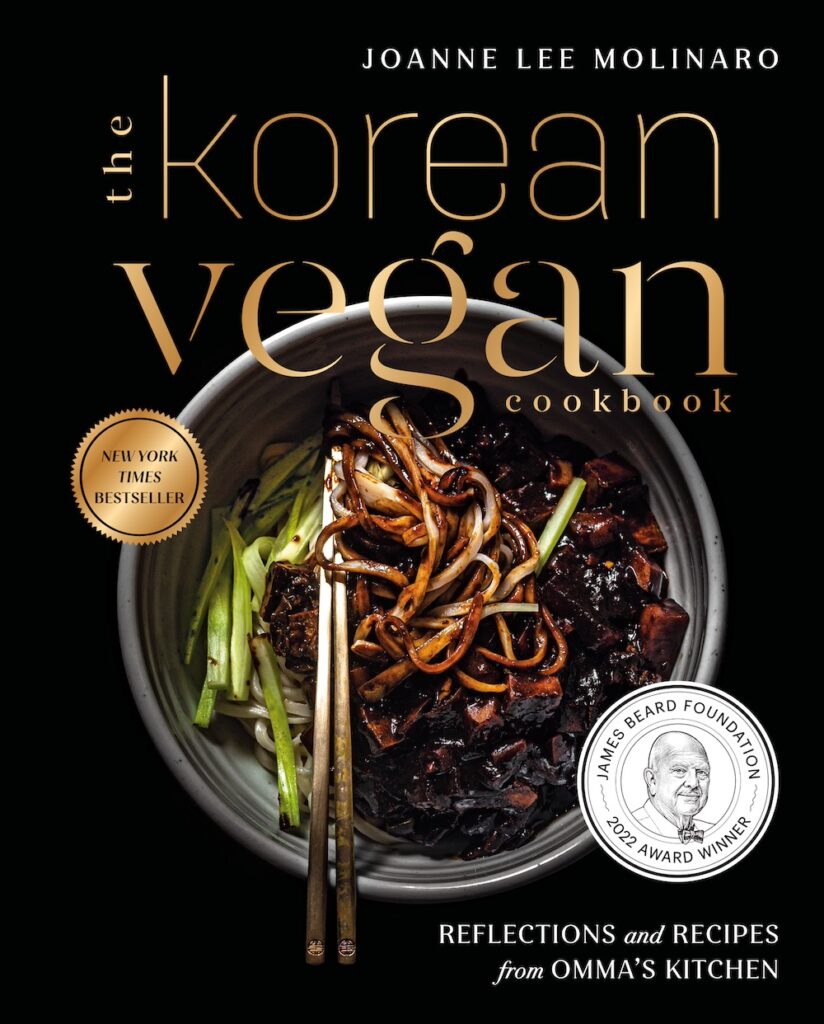
Love it 🙂
Oh yay!!!
Hello! Thanks for sharing your recipe. How mny days can I keep it inside the refrigerator?
Hi Beatriz! You can keep it in the fridge for up to 10 days! It won’t technically go bad, but it’ll start to lose it’s crunch after awhile. 🙂
Looks delicious!
What is a substitute for plum syrup? My link doesn’t work :/
Hi Deb! Any liquid sweetener should be fine—maple syrup for example!